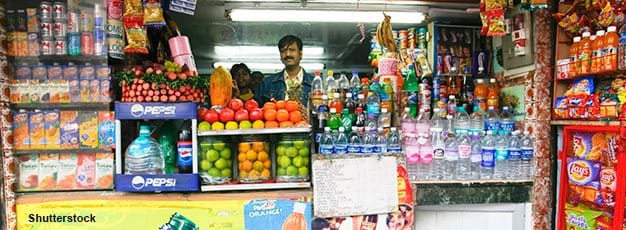Low-Income Countries Are Most Responsive to Income and Food Price Changes

Recent commodity price spikes have put the spotlight on households' food budgets worldwide. Consumers in low-income countries, such as the Democratic Republic of Congo and Ethiopia, are more sensitive to changes in income and food prices than their counterparts in higher income, developed countries like the U.S., Canada, and Germany. As they react to income and price changes, consumers in low-income countries respond with larger adjustments to their food consumption patterns. These adjustments are not uniform across food categories--consumption of higher value food items, such as meats and dairy products, changes more than that of staple foods, which include wheat and rice.
In a recent study, ERS and collaborating economists from other institutions estimated elasticities for nine broad consumption categories (food, clothing, education, housing, house furnishings, medical, transport and communication, recreation, and other) and eight food subcategories (cereals, meat, fish, dairy products, oils and fats, fruit and vegetables, other foods, and beverages and tobacco) for 144 countries. The data used in the study are from the World Bank's 2005 International Comparison Program (ICP), covering 146 countries (the ERS analysis omits Greece and Comoros due to data issues), updating previous results based on the 1996 ICP covering 115 countries.
Advances in ICP data collection since 1996 led to more accurate measures of expenditures, prices, and gross domestic product (GDP) and, consequently, to more accurate estimates of income and price elasticities. The 2005 ICP data, which are the most recent available, account for more than 95 percent of the world's population and 98 percent of the world's nominal GDP. Among the newly added countries in the 2005 ICP are many low-income countries in Africa (now 48, up from 22), as well as China and India.
The income elasticity measures the estimated percentage change in quantity demanded for a particular consumption category if income (taken here as total expenditures on all categories) increases by 1 percent. In general, income elasticities for food are highest among low-income countries, averaging 0.78 percent, compared with an average of 0.50 percent for high-income countries. In other words, consumers in low-income countries will spend a larger share of an increase in income on food than consumers in high-income countries. These finding are in accordance with Engel's law in that as income rises, the proportion of income spent on food falls.
These new measures are higher than those based on the 1996 ICP data, especially for the group of high-income countries. Restaurant and catering expenditures are newly included in the 2005 ICP data, raising the income elasticity for food. Cereals and vegetable oils and fats are among the most essential purchases for households in low-income countries. Income elasticities for both food groups average above 0.5 for low-income countries and under 0.1 for high-income countries.
International Evidence on Food Consumption Patterns: An Update Using 2005 International Comparison Program Data, by Andrew Muhammad, James L. Seale, Jr., Birgit Meade, and Anita Regmi, USDA, Economic Research Service, March 2011
International Food Consumption Patterns, by Yacob Abrehe Zereyesus and Lila Cardell, USDA, Economic Research Service, June 2022


